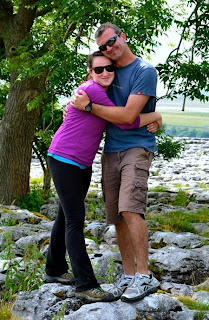
Today Dr. Middlekauff, the professor from Plymouth, had to go to the hospital for emergency eye surgery. Our thoughts are with him. This caused a slight change to the schedule. Our bus driver was considerate enough to drop us off at the Elan Dam with one of our professors and our CIS coordinator. The driver then took Dr. Middlekauff and Dr. Collins to the hospital.
We began the day at the dam with a student presentation, which the presenters generously agreed to move forward a day. Chelsea Welden and John Correa spoke about the history of the environmental movement in the UK. They traced the development of environmental legislation beginning in 1273 to the present. Early legislation focused on coal use, which will be further discussed in a student presentation on air pollution. Other legislation is grouped into categories, such as energy, atmosphere, agriculture, water and wetlands, and wildlife. Although there have been several pieces of particularly successful legislation, such as the Forestry Act, UK policy is generally more species specific and reactive than in the US. Despite a similar transcendental movement in the UK and the US in the 1800's, disasters, such as the 1952 London smog, and EU directives are strong drivers of policy, whereas non-governmental agencies are less influential. This discussion provided background for touring the only non-profit owned dam in the UK.

After the presentation, we were lucky enough to have the ranger, Max, drive us to the dam. It took two trips, but once the group was reunited, Max was kind enough to take several group photos for us.
Entering the dam was a bit intimidating. Once we walked through the initial gated entrance and down the stairs, we were greeted by another locked gate. Once through, we walked down a thin, damp, barely lit tunnel. At the top of the dam, and after a few more photos, we jumped into the lesson.
The dam was built for the city of Birmingham and was put into use in 1903. It has a 15 day reserve and produces 810 kilowatts of power. It is considered a direct water supply, meaning the water does not get treated before use. This is due to the control of land surrounding the watershed which lacks industry and other polluting sources. Whenever there is a water shortage, the need for a super dam is discussed; however, the geology and laws are quite restrictive for such a massive project.

Initial water infrastructure in Britain was started by the Romans but was unable to keep pace with industrialization, as evident in cholera outbreaks between 1830 and 1870. Water resources have since been located outside of cities, as of 1880, and privatized under Margaret Thatcher. Now, the Welsh sell some of their water supply to England. One contentious fact is that London loses 30% of their water due to broken pipes.
Another welcome schedule change was the added option of hiking back from the dam or going on a nature trail. When preparing for a study abroad, advisers emphasize adaptability; today was a prime example of why.
Upon our return to the Elan Valley tourist center, we awaited the arrival of our bus over a snack. Our new hotel has a fantastic beach view. We are excited to call this home base for the next four days.
 |
| Sponsorship towards the creation of some of the materials for the Study Abroad in the UK trip provided by the Office of Undergraduate of Research. |


































